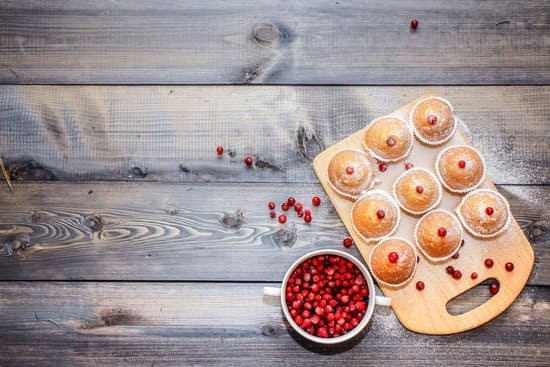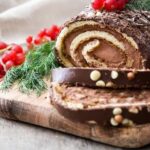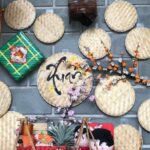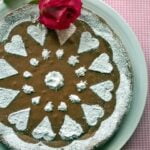Are you ready to learn how to decorate your first cake? The anticipation and excitement of creating a beautifully decorated cake can be overwhelming for beginners. But fear not, with the right tools and ingredients, you can achieve fantastic results. In this article, we will guide you through the process of decorating your first cake, from choosing the right recipe to showcasing your masterpiece.
When it comes to cake decorating, the first step is understanding the basics. Whether it’s mastering frosting techniques or selecting the perfect color palette, there are several key elements to consider. With the right guidance, you can create a stunning cake that will impress your friends and family.
In addition to discussing essential tools and ingredients, we will also provide tips for choosing a beginner-friendly cake recipe. By the end of this article, you will have all the information you need to confidently decorate your very first cake. Let’s get started.
Choosing the Right Cake Recipe
When it comes to decorating your first cake, one of the most important factors to consider is choosing the right cake recipe. As a beginner, it’s essential to select a recipe that is beginner-friendly and easy to work with.
Look for recipes that are straightforward and don’t require advanced baking techniques or specialized equipment. It’s also helpful to choose a cake recipe that has a stable structure, making it easier to decorate without worrying about the cake crumbling or falling apart.
The best types of cakes for decorating are typically ones with a denser crumb, such as butter cakes or pound cakes. These types of cakes hold up well to frosting and decorations, making them ideal for beginners. Additionally, consider choosing a flavor that you enjoy and feel comfortable working with. Whether it’s classic vanilla, rich chocolate, or something more adventurous like red velvet, selecting a flavor that you love will make the decorating process even more enjoyable.
As you embark on the journey of decorating your first cake, remember that practice makes perfect. Don’t be discouraged if your first attempt doesn’t turn out exactly as you envisioned. With time and experience, you’ll refine your skills and become more confident in your abilities. In the end, the most important thing is to have fun and enjoy the creative process of bringing your cake decorating vision to life.
Remember that choosing the right cake recipe is just the beginning of your cake decorating adventure. The next steps involve gathering essential tools, learning basic techniques, and selecting colors and decorative elements that will make your first cake truly shine. Keep practicing, experimenting with new ideas, and don’t be afraid to seek inspiration from other bakers and decorators along the way as you learn how to decorate your first cake.
Essential Cake Decorating Tools
When it comes to decorating your first cake, having the right tools is essential for achieving professional-looking results. Here are some must-have essential cake decorating tools that every beginner should have in their kitchen:
Piping Bags and Tips
Piping bags and tips are indispensable for creating beautiful designs and textures on your cake. Whether you want to create intricate borders or write a personalized message, piping bags and tips allow for precision and control. When purchasing these tools, look for a variety of tip shapes and sizes to give you flexibility in your designs.
Offset Spatula
An offset spatula is a versatile tool that makes spreading frosting on your cake smooth and easy. Its angled blade allows for precise icing application and helps achieve those clean, professional-looking edges. Investing in a quality offset spatula will make the frosting process much more enjoyable.
Turntable
A turntable is a game-changer when it comes to decorating cakes. It allows you to smoothly rotate the cake as you work on it, ensuring even coverage of frosting and decorations. This tool provides efficiency and consistency in your decorating process.
Bench Scraper
A bench scraper is an underrated but incredibly useful tool for cake decorating. It helps create sharp edges on your cake by smoothing out the frosting around the sides. It can also be used for measuring and cutting fondant, making it a versatile addition to your toolkit.
When starting out as a beginner cake decorator, investing in quality tools will set you up for success in creating beautifully decorated cakes. These essential tools will not only make the decorating process easier but also more enjoyable as you bring your creative visions to life.
Basic Cake Decorating Techniques
When it comes to decorating your first cake, it’s important to start with the basics. The first step is to choose a cake recipe that is beginner-friendly and easy to work with. A simple vanilla or chocolate cake is a great place to start.
Once you have your cake baked and cooled, it’s time to gather your essential tools for decorating. Some basic tools include an offset spatula, piping bags and tips, and a turntable for easy frosting application.
Now that you have your cake and tools ready, it’s time to learn some basic frosting techniques. One of the most popular techniques is called the crumb coat, which is a thin layer of frosting applied to seal in any loose crumbs before applying the final layer of frosting. Another technique to master is the art of smoothing and layering frosting for a clean and professional finish on your cake.
To help you get started in mastering these basic techniques, here are some step-by-step guides:
1. Crumb Coat: Apply a thin layer of frosting over the entire cake using an offset spatula.
2. Smoothing: Use a bench scraper or offset spatula to smooth out the frosting evenly around the sides and top of the cake.
3. Layering: Add additional layers or textures of frosting using different piping tips for decorative designs.
Remember that practice makes perfect when it comes to mastering these techniques – don’t be afraid to experiment and make mistakes along the way.
| Essential Tools | Description |
|---|---|
| Offset Spatula | An angled metal spatula used for spreading frosting on cakes |
| Piping Bags and Tips | Disposable or reusable bags with various tips for creating decorative designs with icing |
| Turntable | A rotating stand that allows for easy access when applying frosting and decorations |
With these basic techniques under your belt, you’ll soon be on your way to creating beautifully decorated cakes that will impress friends and family alike.
Choosing the Perfect Color Palette
When it comes to decorating your first cake, selecting the perfect color palette can make a big impact on the overall look and feel of your creation. The psychology of colors plays a significant role in cake decorating, as different colors evoke specific emotions and can set the tone for the occasion. Whether you’re going for a vibrant and festive look or a soft and elegant vibe, choosing the right colors for your first cake is essential.
To start, consider the theme or purpose of your cake. If you’re making a birthday cake for a child, bright and playful colors like rainbow hues or primary colors can be fitting. For a more romantic or sophisticated cake, pastel shades or muted tones may be more suitable. It’s also important to take into account any color preferences of the person you are making the cake for; their favorite colors can serve as inspiration for your palette.
When selecting your color scheme, it’s best to stick to two to three main colors to avoid overwhelming the design. You can also incorporate neutral tones like white, cream, or gold to balance out the palette. Consider using color theory principles such as complementary (opposite) colors, analogous (adjacent) colors, or monochromatic (shades of one color) schemes to create harmony in your design.
Experiment with different shades within your chosen color palette to add depth and dimension to your decorations. For example, if you’ve chosen pink as one of your main colors, incorporating lighter and darker shades of pink can add visual interest to your design. Lastly, use tools like food coloring gels and edible dusts to achieve the exact colors you desire for your first decorated cake.
By taking these tips into consideration when choosing your perfect color palette, you’ll be well on your way in creating an eye-catching and visually appealing first decorated cake that will surely impress both yourself and others.
Once you have selected the perfect color palette for your first decorated cake, it’s time to think about adding decorative elements that will bring your creation to life. From simple embellishments like sprinkles and edible flowers to more advanced techniques like piping designs with frosting, there are endless possibilities for creating a show-stopping design on your cake.
If you’re looking for easy yet impactful decorative elements for your first cake decorating project, consider using sprinkles or edible glitter to add some sparkle and texture. Simple touches like fresh berries or sliced fruits can also bring freshness and natural beauty to your design. Edible flowers are another popular choice for adding an elegant touch to cakes without requiring advanced decorating skills.
For those who want to take their decorative elements up a notch, exploring basic piping techniques can open up a world of creative possibilities. With just a few different piping tips and some practice, you can create intricate designs such as rosettes, swirls, dots, and even written messages on top of your frosted cakes. Don’t be afraid to experiment with different piping tips and techniques until you find what works best for you.
In addition to using traditional frosting decorations, consider incorporating other edible items like chocolate shards or curls, candy pieces, or even small fondant shapes that match the theme of your cake. These extra touches can add dimension and visual interest while allowing you to showcase your creativity in new ways.
Overall-no matter what decorative elements you choose-it’s important not only how they look but also how they taste. Ensure that any additional decorations are not only visually appealing but also complement the flavor profile of your cake.
Adding Decorative Elements
Decorating a cake is not just about frosting and smoothing. It’s also about adding decorative elements that can make your cake truly unique and eye-catching. Whether it’s sprinkles, edible flowers, or candy, the right decorative elements can take your cake to the next level.
Ideas for Decorative Elements
One of the best ways to add pizzazz to your first decorated cake is to incorporate fun and colorful decorative elements. Consider using sprinkles in different shapes and sizes to add texture and visual interest to your cake. You can also use edible flowers to create a beautiful and elegant design on top of your cake. Additionally, don’t be afraid to get creative with candy pieces or even chocolate shavings.
The Art of Piping
Another great way to elevate your cake decorating skills is by mastering the art of piping. Piping allows you to create intricate designs and patterns on your cake using different types of frosting tips. From rosettes to shells to leaves, there are countless designs you can create with piping. Take some time to practice different piping techniques and experiment with various frosting consistencies.
Creating Designs
When adding decorative elements to your first cake, consider the overall design you want to achieve. Think about how you can use various elements such as sprinkles, flowers, or piped designs to complement the theme or occasion of your cake. Whether it’s a birthday, wedding, or anniversary cake, the right decorative elements can tie everything together beautifully.
By incorporating these ideas for adding decorative elements into your first decorated cake, you will create a visually stunning and impressive dessert that will surely impress friends and family alike.
Remember that practice makes perfect when it comes to decorating cakes. Don’t be discouraged if your first attempts don’t turn out exactly as you envisioned – keep practicing and experimenting with various techniques until you achieve the desired result.
Troubleshooting Common Decorative Mistakes
Decorating your first cake can be an exciting and rewarding experience, but it’s not without its challenges. As a beginner, it’s common to encounter decorative mistakes while working on your masterpiece. But don’t worry-many of these mishaps are easily fixable with the right techniques. Here are some common issues you might run into and how to troubleshoot them:
1. Crumbly Frosting: If you find that your frosting is too crumbly and difficult to work with, try adding a small amount of milk or cream to soften it. You can also try gently heating the frosting in the microwave for a few seconds to make it more spreadable.
2. Uneven Decorations: Sometimes, your cake decorations may end up looking uneven or lopsided. To fix this, use a straight-edged spatula or scraper to gently even out the frosting on the sides of the cake. For decorative elements like sprinkles or edible flowers, carefully adjust their placement until they look balanced.
3. Air Bubbles in Frosting: If you notice air bubbles forming in your frosting as you spread it onto the cake, try using a toothpick or skewer to gently pop them. Then, use a smooth, steady hand to continue spreading the frosting evenly.
By addressing these common issues and practicing patience and perseverance, you’ll be well on your way to creating beautifully decorated cakes.
Remember that it’s all part of the learning process. Don’t be discouraged by mistakes-every professional started as a beginner once. With practice and determination, you’ll soon become more confident in how to decorate your first cake and improve your skills over time. So keep experimenting and have fun with it.
Showcasing Your Masterpiece
So, you’ve successfully chosen the right cake recipe, acquired essential tools, mastered basic decorating techniques, selected the perfect color palette, and added decorative elements to your first cake. Now it’s time to showcase your masterpiece. Here are some tips for presenting and photographing your first decorated cake:
- Display: When it comes to displaying your decorated cake, consider using a cake stand or a decorative plate to elevate its presentation. You can also add fresh flowers or edible decorations around the base of the cake for an extra touch.
- Lighting: Lighting plays a crucial role in photography. Natural light is ideal for taking photos of your cake, so place it near a window with good natural lighting. Avoid harsh shadows by using diffused light or white reflectors.
- Background: Choose a clean and simple background to make sure your cake is the focal point of the photo. A solid colored backdrop or a wooden table can provide a beautiful contrast to your decorated creation.
- Angles: Experiment with different angles when photographing your cake. Capture close-up shots of intricate details and textures as well as wide shots that showcase the entire cake.
- Editing: After taking photos of your decorated cake, you may want to edit them to enhance colors and remove any imperfections. Basic editing tools on your smartphone or computer can help you achieve professional-looking results.
Remember that showcasing your decorated cake is not only about presentation but also about capturing and sharing the joy and satisfaction of completing this project. Share it with pride on social media or with friends and family.
Now that you’ve learned how to decorate your first cake and have successfully documented it through photography, take a moment to bask in the sense of accomplishment before moving on to more advanced projects in the future. Whether you decide to pursue formal training in baking and decorating or continue exploring on your own, remember that practice makes perfect.
Keep honing your skills, seeking inspiration from others, and sharing your experiences with fellow baking enthusiasts. And most importantly, enjoy every sweet moment along the way.
Conclusion and Encouragement
Decorating your first cake is an exciting and rewarding experience that allows you to showcase your creativity and skills. As you embark on this journey, it’s important to remember the significance of using the right tools and ingredients to achieve the best results.
From selecting the perfect cake recipe to mastering basic decorating techniques and choosing the ideal color palette, each step contributes to the success of your cake decorating project. By following the tips and guidance provided in this article, you are well-equipped to create a beautiful and delicious masterpiece.
As you explore the world of cake decorating, don’t be discouraged by any mistakes or mishaps along the way. Troubleshooting common decorative errors is part of the learning process, and overcoming these challenges will only make you a better decorator. Remember that practice makes perfect, so embrace every opportunity to refine your skills and technique. With determination and patience, you will continue to improve with each new cake that you decorate.
Finally, we encourage you to share your first cake decorating experiences with us. Whether it’s a success story or a lesson learned from a mistake, we would love to hear about your journey. And as you reflect on your completed masterpiece, take pride in what you have achieved. Your commitment and passion for cake decorating will undoubtedly lead to many more delightful creations in the future.
In conclusion, we hope this article has provided valuable insights and inspiration for how to decorate your first cake. Embrace each step of the process with enthusiasm, creativity, and a willingness to learn. We look forward to seeing what amazing cakes you will create.
Frequently Asked Questions
What Does a Beginner Need for Cake Decorating?
A beginner in cake decorating will need some essential tools and supplies to get started. This includes a turntable, offset spatula, piping bags and tips, a bench scraper, and a good quality frosting.
What Is the First Step in Decorating a Cake?
The first step in decorating a cake is to ensure that the cake is completely cooled before starting. Then, it’s important to level the cake layers if necessary and add a crumb coat of frosting before the final decorations.
Can I Teach Myself to Decorate Cakes?
Yes, it is possible to teach yourself how to decorate cakes. There are countless resources available online, including tutorials, blogs, and videos that can help beginners learn various techniques such as piping, fondant work, and creating different textures on cakes. With practice and patience, self-taught decorators can become quite skilled at cake decorating.

Welcome to our cake decorating blog! My name is Destiny Flores, and I am the proud owner of a cake decorating business named Cake Karma. Our mission is to provide delicious, beautiful cakes for all occasions. We specialize in creating custom cakes that are tailored specifically to each customer’s individual needs and tastes.





